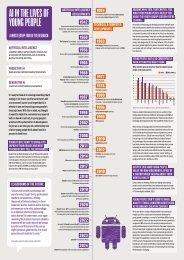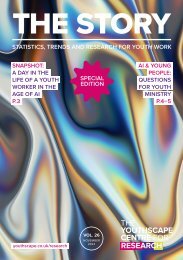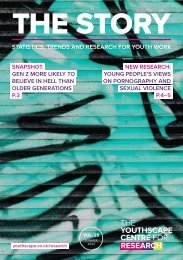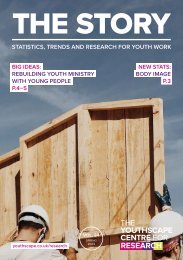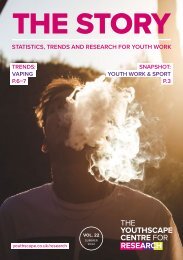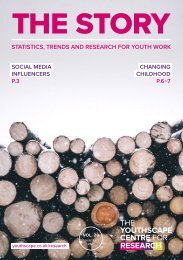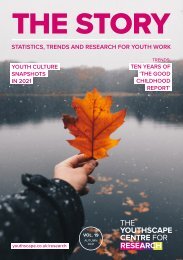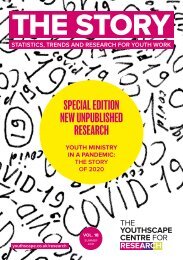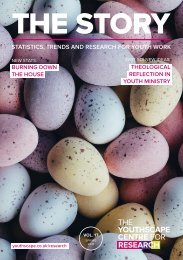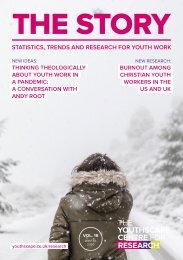The Story Vol 21
The big picture on Russia and Ukraine. Economic precarity for the next generation. Plus findings from 500k young people surveyed on deprivation, education, and aspiration.
The big picture on Russia and Ukraine. Economic precarity for the next generation. Plus findings from 500k young people surveyed on deprivation, education, and aspiration.
You also want an ePaper? Increase the reach of your titles
YUMPU automatically turns print PDFs into web optimized ePapers that Google loves.
SNAPSHOT: Generation Precariat<br />
As part of the Young people’s future health<br />
and economic security project, the Health<br />
Foundation and the RSA conducted an online<br />
survey of 1178 16–24 year olds (weighted to<br />
be representative by gender and region). <strong>The</strong><br />
survey ran in September/October 20<strong>21</strong>, in<br />
the context of concern about increases in the<br />
cost of living, rising energy prices, the end of<br />
the furlough scheme and just as the Universal<br />
Credit uplift ended. 1<br />
Overall, only 41% of those surveyed believe<br />
they will be able to own their own home in the<br />
future and 51% believe they could earn enough<br />
to support a family or to have a comfortable<br />
retirement.<br />
38% of the 16–18 year olds surveyed are in a<br />
precarious financial position 2 and 39% of 16–18<br />
year olds have access to their own savings.<br />
Those suffering from financial precarity are far<br />
more likely to be concerned about their physical<br />
or mental health and their future, and Black<br />
young people are significantly more likely to be<br />
financially precarious than both white and Asian<br />
young people (70% compared to 47% and 45%<br />
respectively).<br />
Precious, 17 years old:<br />
“A lot of the time wages do not<br />
align with living expenses<br />
making it harder for young people<br />
to save or even have disposable<br />
income as all their money goes to<br />
necessities”.<br />
Angel, 17 years old:<br />
“As a young individual who<br />
resides in [a London borough],<br />
I am aware of the deprivation in<br />
the borough, where employment<br />
opportunities don’t provide the<br />
economic stability needed”.<br />
According to the Office for National Statistics<br />
(ONS), the highest proportion of low-paid workers<br />
by age is among 16–<strong>21</strong>-year-olds, with 59% paid<br />
less than two-thirds of median hourly pay.<br />
National Minimum Wage and National Living Wage<br />
rates from April 2022, by age. 3<br />
23 &<br />
over<br />
National<br />
Living<br />
Wage<br />
<strong>21</strong>–22<br />
18–20<br />
Under<br />
18<br />
National Minimum Wage<br />
Apprentice<br />
Hourly rate<br />
(from April 2022)<br />
£9.50<br />
£9.18<br />
£6.83<br />
£4.81<br />
£4.81<br />
1. <strong>The</strong> scheme had benefited 900,000 16–24 year olds. 2. <strong>21</strong>% just about manage to make ends meet, 6% can’t make ends<br />
meet and 11% say their financial position changes month to month. 3. Source Gov.uk. Note: <strong>The</strong> apprentice rate applies to<br />
those under 19 years old or in their first year of their apprenticeship.<br />
P.3







